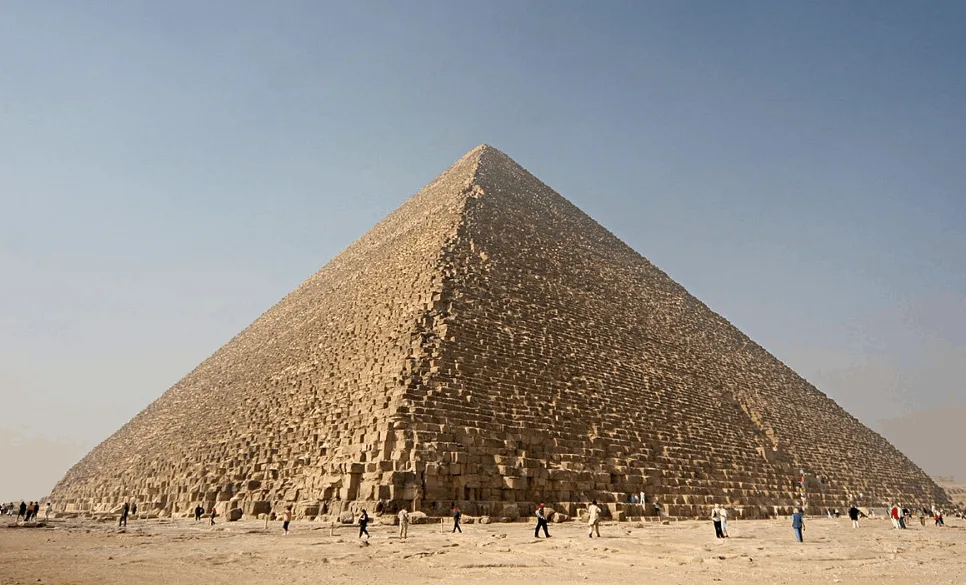Did you know that most of the biggest pyramids in Egypt can be found around Cairo?
Let’s check out the ultimate list of facts about the Red Pyramid, one of the biggest pyramids of them all!
1. It’s located in the Dahshur Necropolis
The Red Pyramid was built on the west bank of the Nile River in the royal Dahshur Necropolis. This area contains some of the oldest and best-preserved pyramids of Ancient Egypt.
The Dahshur Necropolis can be found about 40 kilometers (25 miles) south of the modern-day capital of Egypt, Cairo. Apart from the Red Pyramid, the most prominent ones located here are the Black Pyramid and the Bent Pyramid.
Of the 11 pyramids that were originally built here, only 5 remain today.

2. It’s one of the biggest pyramids in Egypt
The Red Pyramid stands 105 meters (344 feet) tall which makes it the third-tallest pyramid in Egypt behind the Pyramid of Khafre and the Great Pyramid of Giza. Nearly 160 levels of stones were used to reach the top.
It also covers a massive area as it has a base of 220 meters (722 feet). That’s the length of 2 long football fields, which is simply astounding.
One of the most interesting facts about the Red Pyramid is that it was the tallest structure in the world upon completion. It was surpassed by the Great Pyramid of Giza, which would go on to hold the record for 3,871 years!
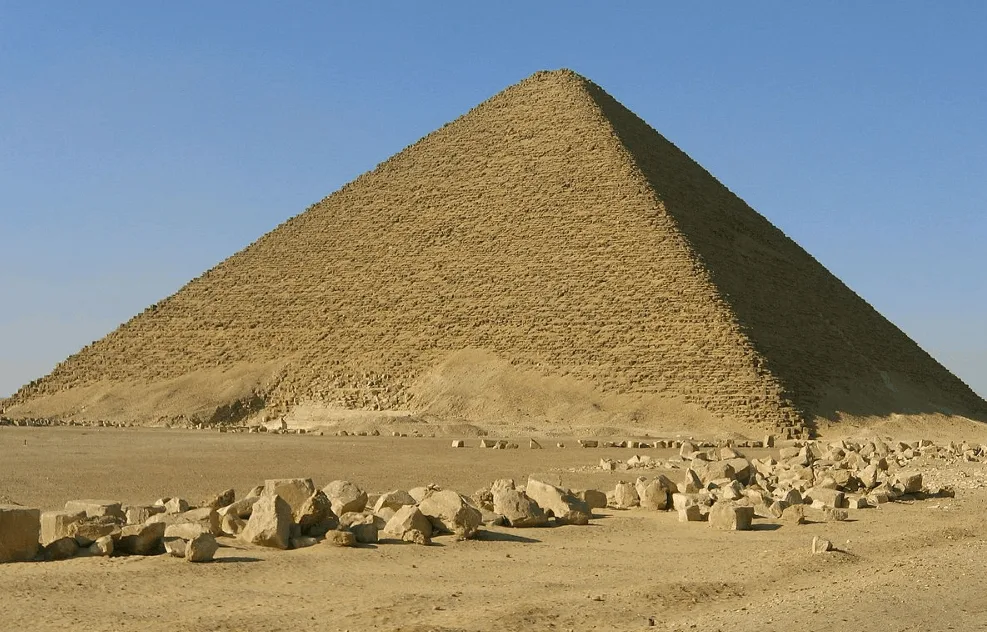
3. Why is it called the Red Pyramid?
The Red Pyramid appears to have a red shine to it caused by the red limestone used to build the core structure. So it’s just a reference to its appearance.
Interestingly enough, locals don’t refer to it as the Red Pyramid but call it “el-heram el-watwaat,” which translates to the “Bat Pyramid.”

4. The pyramid wasn’t always red
One of the most remarkable facts about the Red Pyramid is that it wasn’t always red. In ancient times, the pyramid must have looked extremely shiny in the Egyptian sun.
That’s because it was completely covered with an outer layer of Tura limestone, the most popular type of stone of Ancient Egypt. These stones were removed during the Middle Ages though and used for various construction projects in and around Cairo.
Some of the stones that used to cover the Red Pyramid are still laying around at the corner of the structure.
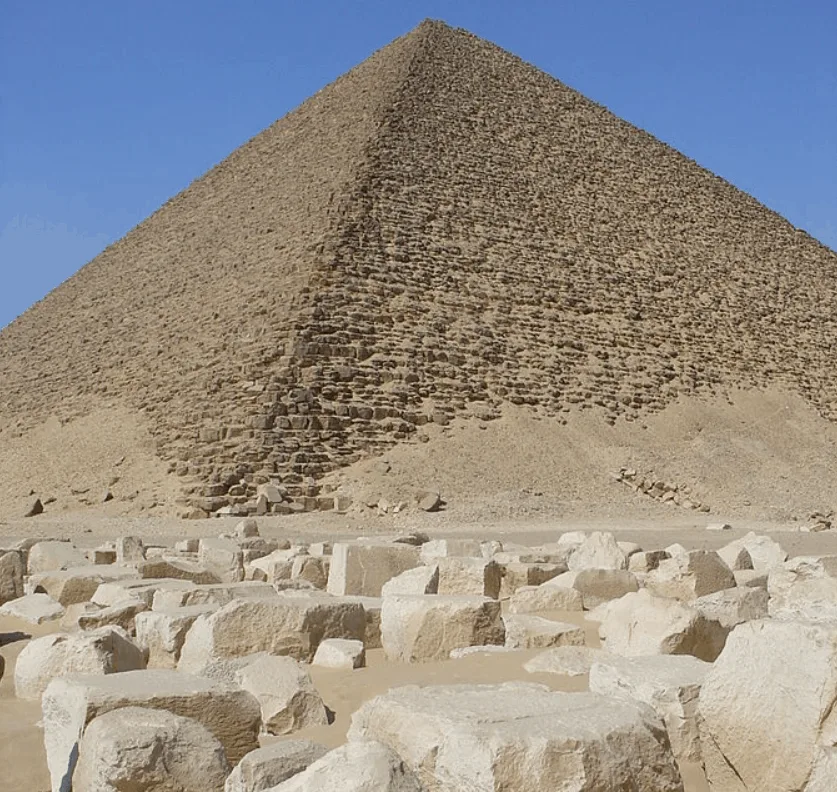
5. It was built by the founding father of the 4th Dynasty
The Red Pyramid was built by Pharaoh Sneferu, also known as “Soris.” He was the founding pharaoh of the Fourth Dynasty of Egypt which was during the Old Kingdom.
This period is also referred to as the “Age of the Pyramids,” and Sneferu certainly had a big stake in that as he’s referred to as the “Greatest builder of the Pyramid Age.”
Construction of the Red Pyramid started around 2590 B.C. and was actually his third pyramid after his first two attempts were kind of a failure. Both the Pyramid of Meidum, which collapsed in antiquity, and the Bent Pyramid, were suffering from engineering problems.
Then again, these were some of the first major construction projects of this scale in history, even though the Pyramid of Djoser is considered to be the absolute first.
All the pyramids he constructed, 3 major ones and 2 smaller ones, are believed to have consisted of 3,600,000 cubic meters (4,708,800 cubic yards) of stones.
We can only stand in awe while thinking about the sheer size of these projects!
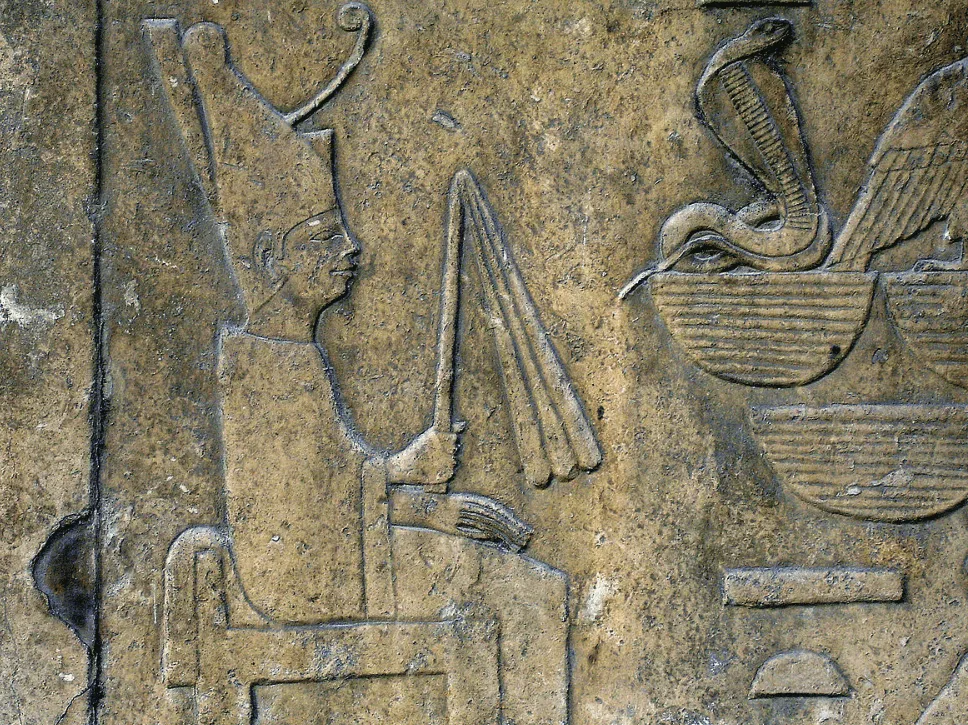
6. Its design was an architectural improvement
The biggest problem with his two earlier attempts to build a massive pyramid was that they miscalculated the enormous pressure of the stones put on the sandy soil they were built on.
In other words, they didn’t have a strong enough foundation, to begin with. This explains why the Meidum Pyramid collapsed and why the angle of the Bent Pyramid suddenly changed which gave it its name.
The angle of the Bent Pyramid was changed from 54 degrees at the base to 43 degrees, most probably because it would have suffered the same faith as the Meidum Pyramid.
Because of this, it’s assumed that the Red Pyramid was the first real attempt to build a smooth-sided pyramid, a theory that is strengthened by the fact that it has the same angle as the top portion of the Bent Pyramid from bottom to top, 43 degrees.

7. It’s uncertain how long it took to build the Red Pyramid
While archaeologists were digging around at the site of the Red Pyramid, they discovered red stones that were marked with dates. This allowed them to estimate how long it would have taken to build the Red Pyramid.
Strangely enough, opinions remain divided as one source suggests it would have taken 17 years to complete, while another suggests it would only have taken 10 years and 7 months.
Dr. Rainer Stadelmann was also able to determine how fast the construction moved forward. According to the writings on these stones, the pyramid stood 15 meters (49 feet) tall after 4 years with 30 percent of the work completed.

8. The entrance of the Red Pyramid is on the north side
Just like all the other pyramids, the Red Pyramid was constructed to serve as both the final resting place of the Pharaoh’s remains and as a means for him to move to the afterlife. Therefore, it’s considered to be a giant tomb.
To reach the chamber where he was buried, a massive corridor was constructed which starts at the north side of the pyramid. This passage is only 91 centimeters (3 feet) high and 120 centimeters wide (4 feet) and slopes down at an angle of 27 degrees for 61 meters (200 feet).
Do you suffer from claustrophobia? Then this surely isn’t a descent for you!

9. There are 3 rooms inside the Red Pyramid
This corridor leads to 2 fairly large chambers that most probably served as storage rooms. These are located at ground level and have ceilings that are 12 meters (40 feet) high.
These two rooms are connected with a small passage which most probably used to be sealed off. The second room contains a hidden passage located 7.6 meters (25 feet) above its floor. This passage finally leads directly to the burial chamber of the pyramid.
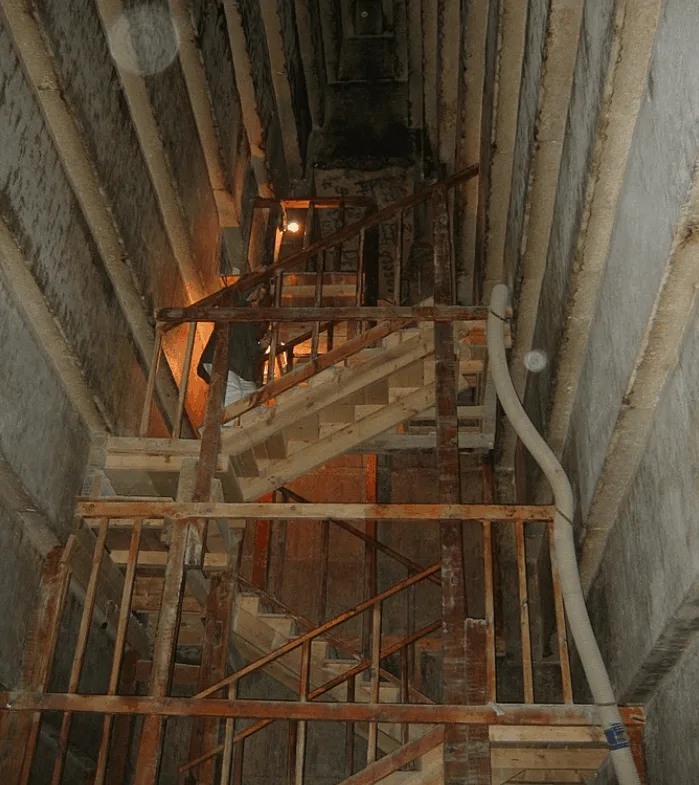
10. The ceiling of the main room carries 2 million tonnes of stones
One of the most astounding facts about the Red Pyramid is that the burial chamber was incorporated into the actual structure of the pyramid itself. It has a corbelled ceiling that reaches 15 meters (50 feet) high and consists of 14 layers of limestone.
This unique design feature allowed the chamber and its ceiling to support the 2 million tons of stones that are resting on top of it. An absolutely astounding architectural feat!

11. The capstone of the pyramid has been reconstructed
Every pyramid that was ever constructed in Ancient was topped out with a capstone referred to as a pyramidion. This capstone was usually gilded as well, which means it was an easy target for robbers.
Remarkably, fragments of the capstone that once decorated the top of the Red Pyramid have been found at the base of the pyramid and it has been reconstructed.
The subsequent discovery was amazing because it appears that even though all 4 sides of the Pyramidion had a different angle, the error is extremely small. Over a length of 102 meters (335 feet), all sides differ just 2 degrees, which proves that the Ancient Egyptians were well ahead of their time in terms of engineering capabilities.
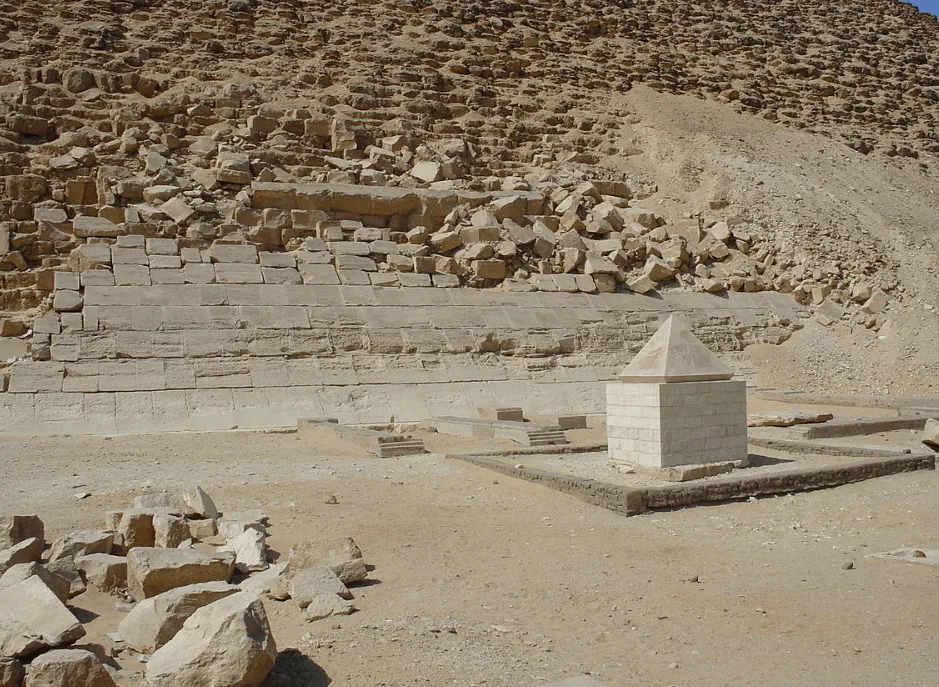
12. It was the predecessor of the biggest pyramid ever built
The Red Pyramid was arguably the most important pyramid that was ever constructed in Ancient Egypt. It was the first pyramid with smooth-sided sides and it formed the inspiration of an even more impressive structure, the Great Pyramid of Giza.
It’s no surprise that the son of Sneferu, the greatest building in Ancient Egypt, followed in his father’s footsteps and tried to outdo him. Khufu built the Great Pyramid of Giza and used all the knowledge his father gained during his 3 attempts to build a structure that would be the biggest construction project for thousands of years!
